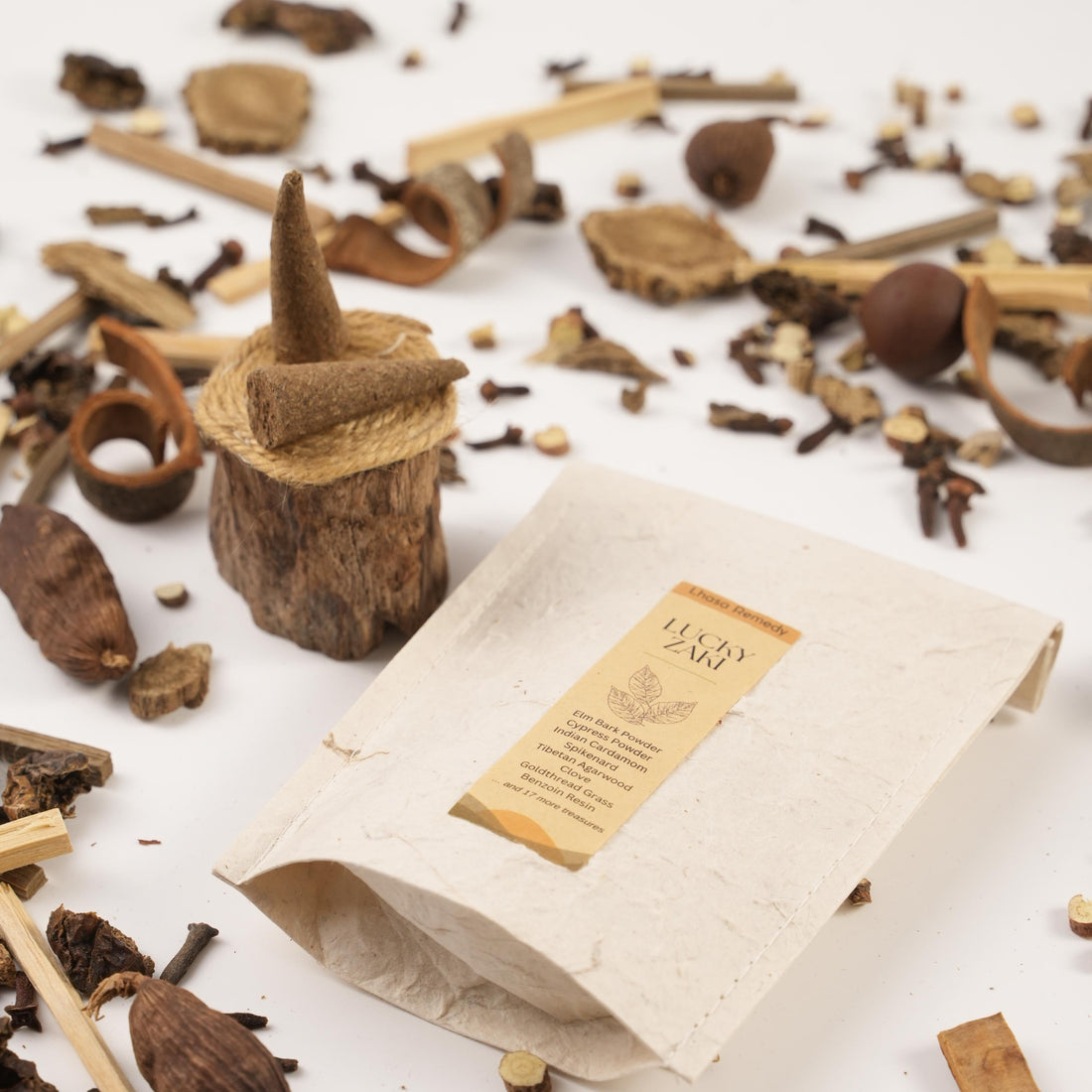
Can Incense Support Focus? Exploring ADHD-Friendly Aromatics
In today’s fast-paced, overstimulated world, maintaining focus can feel like a constant battle. For those living with ADHD—or simply navigating attention challenges—mainstream solutions often involve pharmaceuticals or productivity hacks. But there’s another layer worth exploring: the role of scent in regulating attention, mood, and nervous system states.

In many traditional medicine systems, incense was more than ritual—it was a tool for managing sensory balance. Could these ancient blends, rooted in Tibetan and Ayurvedic traditions, support better focus today?

The Ancient View: Wind, Stillness, and Attention
Tibetan medicine sees attention not as a fixed trait, but as the product of energetic balance. Specifically, the element of rlung (pronounced “loong”), or wind energy, governs mental movement, speech, breath, and nervous system function. When wind energy becomes chaotic or dispersed, symptoms might appear: restlessness, racing thoughts, sensory overwhelm.

To calm this energetic dysregulation, traditional doctors prescribed not only herbs and meditation—but specific incense formulas designed to settle wind and nourish the mind.

What Does Science Say About Scent and Attention?
Modern research has begun catching up to what ancient traditions intuited. A 2022 review published in Frontiers in Physchology notes that olfactory stimulation can modulate the activity of the prefrontal cortex—an area of the brain essential for attention regulation and executive function.

Inhaling specific plant volatiles, like linalool (found in lavender and nutmeg) or (present in camphor and some resins), has been shown to influence parasympathetic activity, potentially improving calm alertness.
Of course, incense is not medicine. But its ability to create a focused, sensory-safe environment may help people struggling with attention challenges find moments of clarity.

ADHD and Sensory Regulation: A Ritual-Based Approach
Individuals with ADHD often experience sensory dysregulation—either too much stimulation or not enough. One helpful approach is to build predictable sensory rituals. Lighting incense can:
- Signal the beginning of a focused task (e.g., study, work, journaling)
- Ground the body through multisensory input (sight, smell, heat)
- Replace excessive stimulation (scrolling, noise) with a calming alternative
This is especially effective when the incense blend is chosen for its grounding or focus-enhancing properties.

Best Lhasa Remedy Blends for Focus
We don’t claim to cure ADHD—or anything else. But based on both tradition and ingredient profiles, these two incense blends may support clarity and presence:
- Sera Serene: Contains clove, sandalwood, and nutmeg. This blend is compact and perfect for short bursts of study or breathwork.
- Lucky Zaki: A spicier, solar blend that may help re-energize a scattered mind. Includes Jatamansi (Himalayan Spikenard), nutmeg, and traditional energizing herbs.
Explore Sera Serene for grounding tasks, and Lucky Zaki when you need a mental spark.

Internal Reading & Ritual Guides
- How to Spiritually Cleanse Your Home with Tibetan Incense
- How to Use Incense to Cleanse Your Space and Energy
- Does Incense Really Cleanse the Air?
Caution: Scent Sensitivity and Safety
Not everyone processes scent the same way. If you or someone you know is highly scent-sensitive (as many neurodivergent folks are), use incense in a well-ventilated space and start with mild blends like Sera Serene.
Always choose high-quality incense with no synthetic fragrance oils or chemical binders—like those made traditionally from whole herbs and resins.

Final Thoughts
You don’t need a diagnosis to struggle with focus. If your environment feels scattered, or your thoughts hard to organize, sensory rituals like incense can offer a small anchor.
Try burning a cone or stick at the same time each day. Let the scent mark the start of your deep work, journaling, or meditation. Give your brain a rhythm, not a rush.
Want to try ritual-grade incense blends made with wild Tibetan herbs? Explore Sera Serene and Lucky Zaki here →

